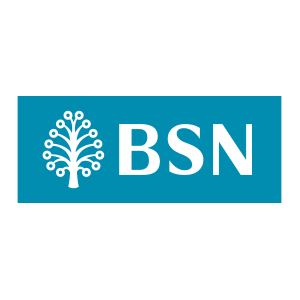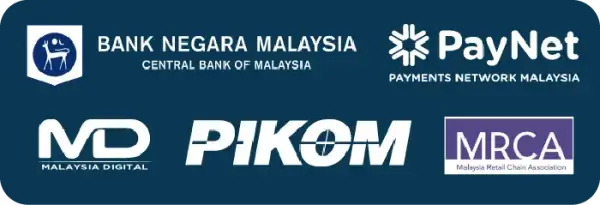
Buy Now, Pay Later (BNPL) and credit cards each serve different needs for Malaysian consumers and businesses.
BNPL offers short-term, interest-free flexibility that appeals to younger users and digital shoppers, while credit cards provide broader acceptance, higher limits, and long-term financial control though often with fees and interest.
With Malaysia’s Consumer Credit Act 2025 introducing tighter BNPL regulations, understanding how each option works is essential.
BNPL breaks purchases into smaller instalments usually over 3 to 6 months, often interest-free. In contrast, credit cards provide a revolving credit line that allows multiple transactions and the option to pay in full or carry a balance with interest.
In short, BNPL simplifies short-term spending, while credit cards offer more flexibility for long-term borrowing and broader usage.
Why Adopt BNPL for Your Business? What Are the Benefits?
BNPL is not just a payment option, it’s a growth lever for businesses looking to increase conversions, customer reach, and sales value.
- Boost Conversion Rates
BNPL spreads payments into manageable instalments, easing price shock at checkout. This reduces friction and can help lower cart abandonment, especially for first-time buyers or customers without credit cards. - Increase Average Order Value (AOV)
When customers don’t need to pay the full amount upfront, they’re more likely to purchase higher-ticket items or add more to their cart. Many merchants report a 20%–40% uplift in AOV after implementing BNPL options.
(Source: “BNPL Impact on Conversion Rates: Key Insights,” Webmedic.) - Attract Younger and Underbanked Consumers
BNPL appeals especially to Millennials and Gen Z shoppers who are wary of traditional credit and may not qualify for credit cards. By offering BNPL, businesses can tap into a growing customer segment that values financial flexibility. - Improve Customer Retention and Loyalty
Flexible financing creates a smoother customer experience, which can encourage repeat purchases. Some BNPL platforms even offer loyalty tools or cashback incentives that drive ongoing engagement.
Read more: The Power of Loyalty Programs for Malaysian Retail - Enhance Competitive Advantage
As more Malaysian retailers adopt BNPL, not offering it could put your business at a disadvantage. BNPL is increasingly viewed as a standard checkout feature in e-commerce and omni-channel retail. - Marketing & Promotional Support
Leading BNPL providers often co-market with merchants, featuring them in apps or campaigns. This can help drive traffic and brand visibility at no extra cost.
What Are the Costs for Businesses?
BNPL usually involves higher transaction fees but offers better short-term conversion.
Payment Method | Merchant Fees | Settlement Time | Risk Exposure |
BNPL | 2% to 6% per transaction | 1 to 5 business days | Minimal (provider bears) |
Credit Cards | 1.5% to 3% per transaction | 1 to 3 business days | Moderate (chargebacks) |
While BNPL may cost more in fees, it often yields higher average order values and more completed checkouts.
Note: Fee percentages are illustrative and can vary significantly between providers and based on individual merchant agreements
Which Is More Accessible to Consumers?
BNPL lowers entry barriers for consumers, making it more inclusive and frictionless compared to traditional credit cards.
- Simplified Approval Process
BNPL platforms typically use alternative credit scoring methods, behavioural analytics, or soft credit checks. This allows them to approve more users, particularly those without a formal credit history, almost instantly at the point of checkout. - No Documentation or Salary Slips Required
Unlike credit cards, which demand income proof, EPF statements, or employer verification, most BNPL providers only require a mobile number and a valid ID. This opens access to students, freelancers, gig workers, and underbanked segments. - Faster Onboarding
BNPL users can activate their account and complete a purchase in minutes, often during their first shopping session. In contrast, credit card applications may take days to approve and require multiple verification steps. - Lower Psychological Barriers
Because BNPL doesn’t feel like “debt” in the traditional sense, many consumers are more willing to use it even those previously hesitant about credit products. This makes BNPL a popular option for discretionary or impulse purchases. - Broader Market Reach
For businesses, this accessibility means tapping into a wider audience. BNPL expands your potential customer base beyond the banked, salaried demographic that credit cards typically serve.
What Are the Risks for Merchants?
BNPL reduces credit risk but adds operational and support challenges.
Integration & Setup Costs: BNPL may require tech work to connect with your POS or ecommerce system.
Disputes & Returns: Handling refunds or complaints involves both the customer and the BNPL provider, which can delay resolution.
Fraud Risk: Lower entry barriers make BNPL more vulnerable to misuse or identity fraud.
Clawbacks: Unlike credit card chargebacks, BNPL providers may reclaim funds if a customer defaults or disputes a charge.
Support Load: Your team may field extra questions even for issues controlled by the BNPL provider.
Compliance Dependence: If your BNPL partner isn’t compliant with new regulations in 2025, your business could face disruptions.
How Is Regulation Evolving for BNPL and Credit Cards in Malaysia?
BNPL is expected to enter formal regulation in 2025, aligning it more closely with the standards applied to credit cards.
- The Consumer Credit Act 2025 mandates licensing and fair-lending standards for BNPL.
- Credit cards are already regulated by Bank Negara Malaysia under financial services law.
- Merchants should ensure BNPL partners comply with upcoming CCA standards to avoid risk.
Conclusion: BNPL or Credit Cards, Which Suits Your Business?
BNPL and credit cards each offer value depending on your business model, target audience, and transaction size. BNPL excels at improving conversion rates and appealing to cost-sensitive or younger consumers. Credit cards remain important for higher-limit purchases and loyalty-driven spending.
The key is offering a payment experience that supports both options without adding complexity.
If you’re looking for a flexible payment gateway that supports BNPL alongside traditional methods, Paydibs provides an integrated solution designed for Malaysian businesses. From card payments to instalment-based checkout, it offers a streamlined way to serve your customers better, online or in-store.
Learn more about Paydibs the payment gateway in Malaysia and how it supports your business growth.
Disclaimer: This article is for informational purposes only and does not constitute financial, legal, or regulatory advice. Businesses should consult with a qualified professional before making any financial decisions or implementing payment solutions. All product and service references, including Paydibs, are mentioned in a general business context.
Legal Disclaimer: All brand names, trademarks, and logos displayed on this website are the intellectual property of their respective owners. Their use herein is solely for identification purposes without written consent or direct affiliation from the respective owner.
Frequently Asked Questions About BNPL And Credit Cards
What is the key difference between BNPL and credit cards?
BNPL offers short-term, fixed instalments often interest-free; credit cards offer revolving credit with interest charges if unpaid.
Is BNPL safer than credit cards for merchants?
BNPL typically transfers credit risk to the provider, while credit cards may leave merchants exposed to chargebacks.
Do consumers in Malaysia prefer BNPL or credit cards?
Younger consumers increasingly prefer BNPL for affordability and simplicity, while older segments still use credit cards for rewards.
Which payment method has lower fees for businesses?
Credit cards generally have lower transaction fees, but BNPL can drive higher conversion and AOV.
Will BNPL be regulated like credit cards in Malaysia?
BNPL is expected to come under formal regulation starting in 2025, requiring licensing and compliance under the proposed Consumer Credit Act (CCA).
Should my business offer both BNPL and credit card options?
Yes. Providing multiple payment options can cater to a wider audience and improve checkout completion rates.
近期文章
- Setting Up a Payment Gateway on Shopify (Malaysia & Beyond)
- Shopify Malaysia: Payment Gateway Problems You Should Know
- The Future of Payments: How APIs Are Powering Malaysia’s Cashless Economy
- WooCommerce vs Shopify for SMEs: Which Handles Payments Better?
- How A Payment Gateway Works (Malaysia SME Guide)
类别
我们的合作伙伴 :






